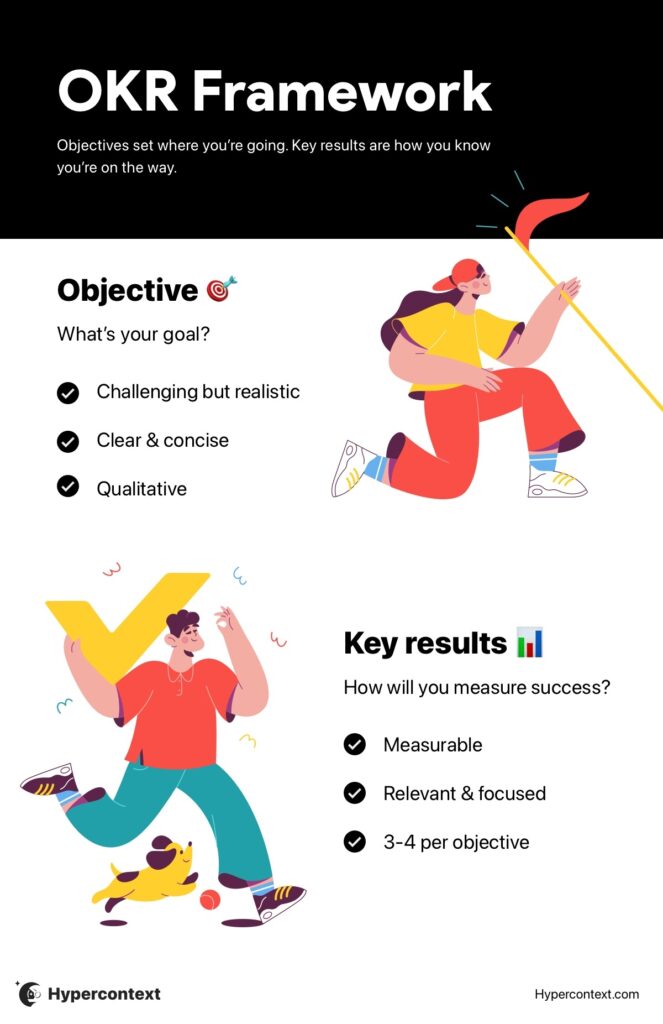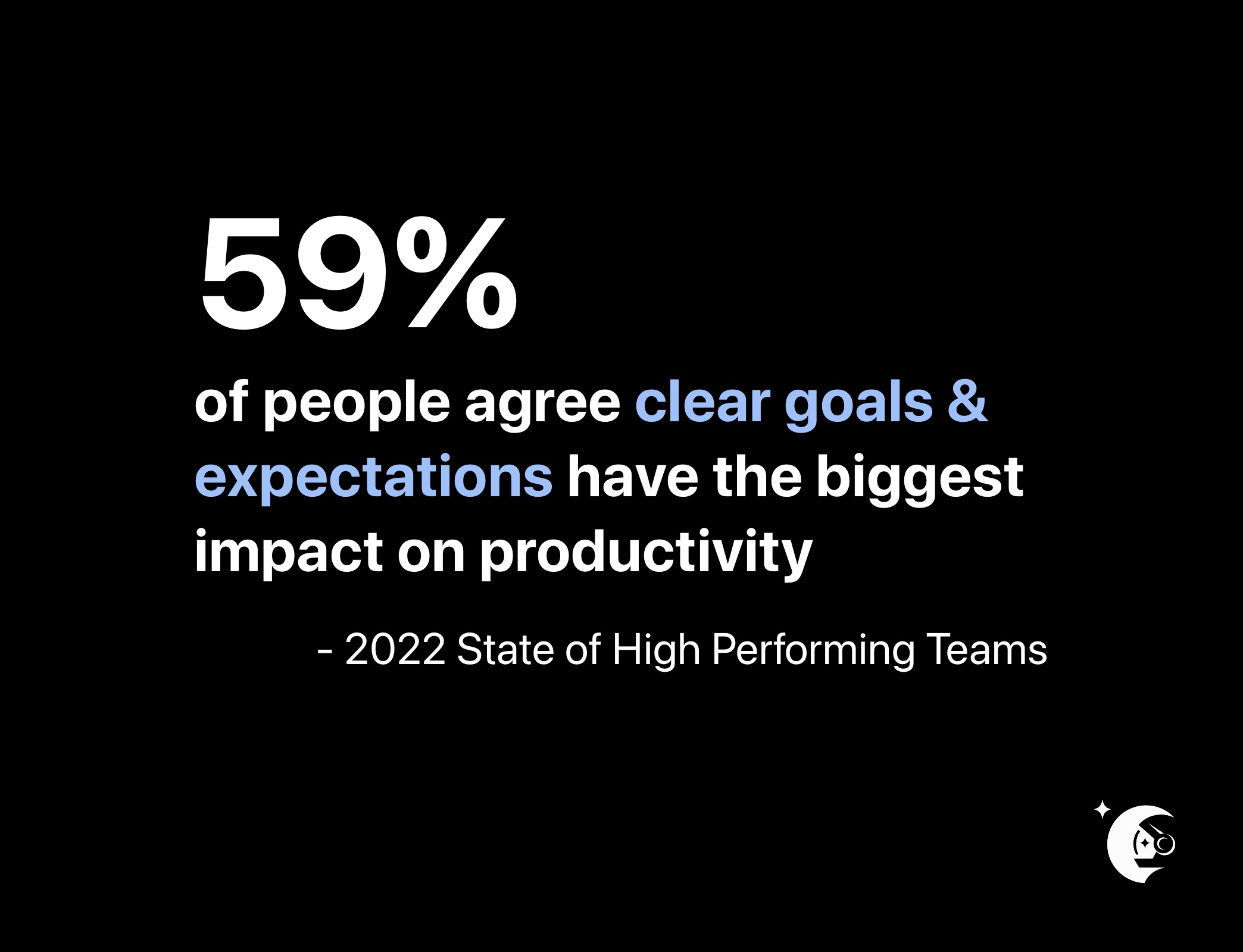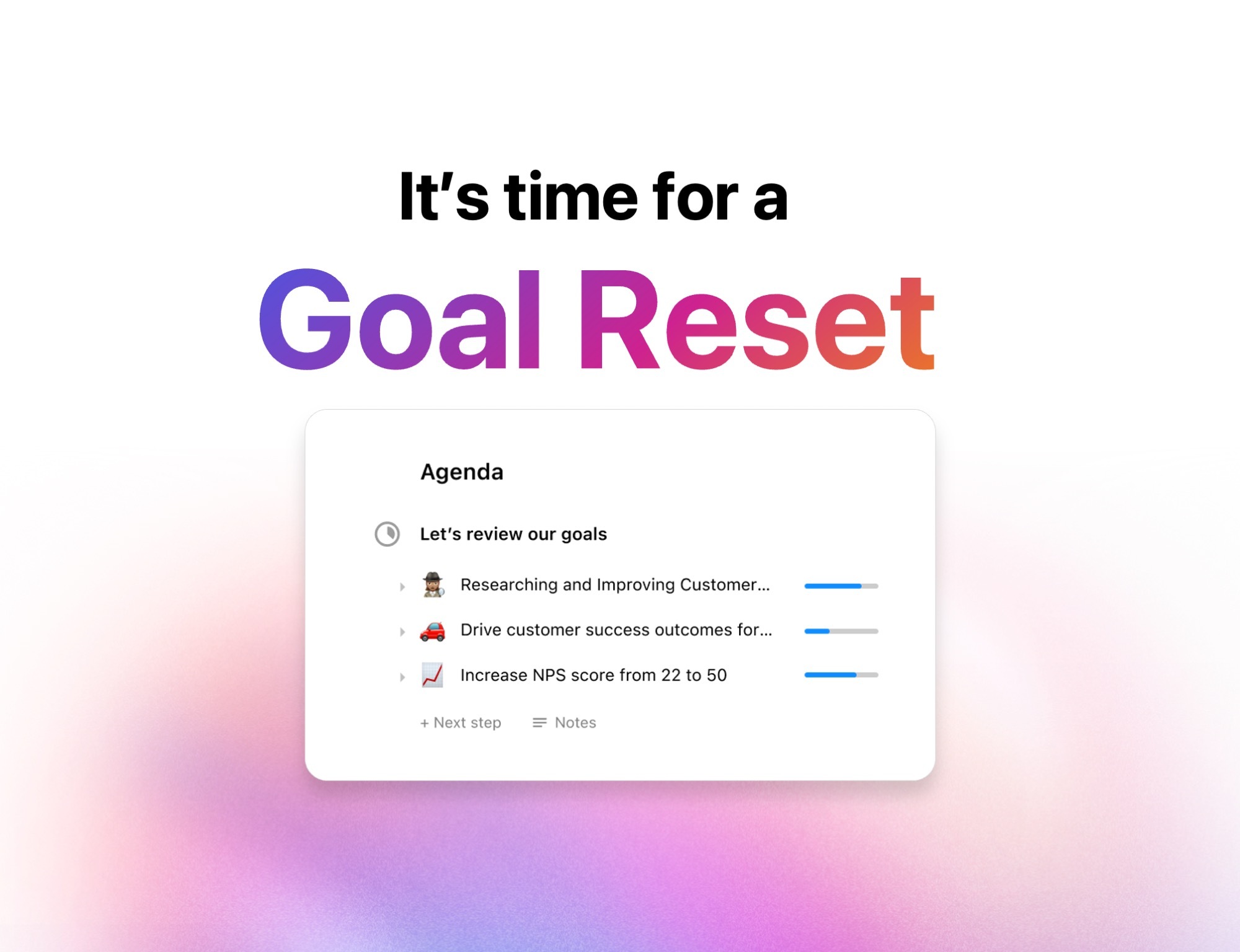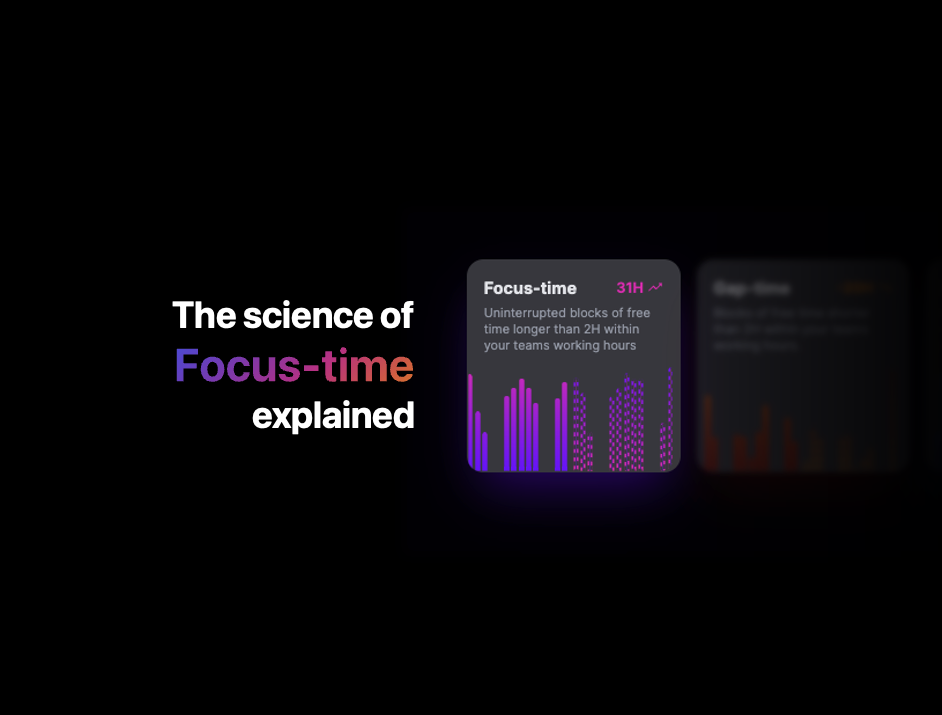The goal-setting framework guide for 2021
14 min readNot sure what goal-setting framework is right for your team? In this guide, we'll walk through 7 of the most popular frameworks to help you decide.

We talk a lot about goal-setting around here, and for good reason. Goals provide direction and focus, increase accountability and improve motivation. They’re essential to high-performing teams. In fact, Harvard Business School found that people with goals are 10x more likely to succeed.
But goal-setting is a lot easier said than done, especially if you don’t know where to start. There are virtually dozens of goal-setting frameworks out there — we’ve featured 7 in this guide alone. While some goal-setting frameworks can drive your team forward, others can just as easily derail your efforts if they aren’t compatible with the rest of your organization.
The key is to select the best possible fit for your team. We’re here to help you do that. If you want to know more about goal-setting methods, we’ll be answering some important questions, like:
- What is a goal framework?
- What are the 5 successful principles of goal-setting?
- What are the 7 steps of goal-setting?
We’re also digging into the good stuff. Specifically: 7 goal-setting frameworks, methods, and strategies to consider in 2021. These include:
- OKRs
- SMART Goals
- Backward Goals
- Big Hairy Audacious Goals: BHAG
- Think big, act small, move quickly: BSQ
- Goal Pyramid
- One-Word Goal-Setting
But first thing’s first…
What is a goal framework?
A goal framework is a structured approach to goal-setting. Although goal frameworks differ in terms of their specific rules and processes, they’re all generally used to simplify and manage goals to increase the likelihood of success. This usually involves breaking down bigger and more complex goals into smaller actions and tasks to be accomplished by a particular date.
Goal frameworks are best suited for goals that can be completed in 1-3 months, and many incorporate milestones to chart your progress along the way. But more on that in a minute.
What are the 5 successful principles of goal-setting?
In 1968, American psychologist Dr. Edwin Locke published a groundbreaking theory that linked goal-setting and task performance. According to his work Toward a Theory of Task Motivation and Incentive, the combination of specific, challenging goals and appropriate feedback results in higher performance levels.
He later teamed up with fellow researcher Dr. Gary Latham. In the 1990s, they jointly published A Theory of Goal-Setting & Task Performance, which expanded on Locke’s earlier works. They also outlined 5 principles that are critical to effective goal-setting — aptly referred to as Locke and Latham’s goal-setting principles. These include:
1. Clarity
Goals should be clear, precise, and well-defined.
2. Challenge
While everyone wants their goals to be attainable, there can be negative effects when setting the bar too low. In fact, Locke and Latham found that goals that are too easy can actually decrease motivation and performance — just like goals that are unreachable. Instead, aim for that sweet spot in the middle by setting challenging goals that are still realistic.
3. Commitment
Everyone on your team should understand and commit to their goals.
4. Feedback
Feedback should be provided throughout the entire process, from setting goals all the way to doing a retrospective exercise about them, in order to help keep your team on track and stay motivated. This also makes it easier for employees to make any necessary adjustments along the way, rather than waiting until the end of the quarter to determine whether or not they’ve achieved a particular goal.
5. Task Complexity
Goals should incorporate realistic timeframes, milestones, and subtasks depending on complexity.
What are the 7 steps of goal-setting?
No matter which goal-setting method you choose to follow, there are some common steps you can take to keep things running smoothly.
1. Analyze your previous goals
Take a good look at your goals from the previous year or quarter. The best time to do this is during a quarterly retro and planning meeting. During this time, you can reflect as a team on things like:
- What went well for you and your team?
- Were there any goals you missed? Why?
- How was the workload for each individual?

Analyzing your more recent goal-setting struggles and victories will help you plan accordingly for the future.
2. Understand your priorities
Develop a firm understanding of “big picture” goals and priorities of the executive team. This will help ensure that any goals you develop at the team-level are in sync with the rest of your organization.
3. Build out your team goals
How can your department support these organizational goals and priorities? Build out the goals for your team accordingly. For instance, one example could be increasing the sales pipeline from $2 million to $4 million. Using a goal-setting software will help you get the ball rolling and keep a pulse on team goals throughout the quarter.
4. Brainstorm
Loop in the rest of your team on the goal-setting process. Run a meeting to discuss the quarterly team goals you’ve come up with and open the floor to discussion. This is a great opportunity to gather feedback, prompt new ideas, and finalize both team and individual goals before they’re finalized.
5. Record your goals
Write down your team goals using a tool like Hypercontext or Google Sheets. As the adage goes, “out of sight, out of mind” — if your team goals aren’t easily accessible to everyone, and more importantly visible, they might be forgotten.
6. Revisit your goals
Review your goals and track their progress during weekly team meetings. Keep a special lookout for any roadblocks which could derail your team and correct them as you go along. There should be no surprises when you reach the end of the year or quarter.
Pro tip: Hypercontext will actually surface your team goals at the top of your meeting agenda to ensure you never forget about them.

7. Review your goals
Take the time to review your goals properly when you reach the end of the process. How did you do? What about your team? Call a meeting to discuss what went well, what could have gone better, and whether or not the goals you set were realistic and achievable. Use this valuable intel to inform your goals next quarter.
Rinse and repeat!
7 goal-setting frameworks, methods, and strategies to consider in 2021
Now that we’ve covered some of the fundamentals, let’s dive into 7 common (and not-so-common) goal-setting frameworks to help you decide on what to use with your team moving forward.
1. OKRs
OKR stands for “Objectives & Key Results.” This goal-setting framework establishes objectives, which define a particular goal. The objectives are then broken down into key results and milestones to measure your progress along the way. The OKR goal-setting method originated at Intel before spreading to other tech companies like Google, Netflix, and Twitter.
We also love OKRs at Hypercontext — in fact, we’ve got a free library filled with over 180 OKR examples to help you jumpstart your goal-setting.

OKR example for managers:
Objective:
Build and lead a world-class team
- Key Results: Fill 3 openings on the team with high-performing individuals by the end of the quarter
- Ensure Hypercontext meeting rating of 85% or more across all 1:1s and team meetings this quarter
- Set a minimum of 1 professional development goal for every member of the team before the end of January
- Average eNPS score of the team is 40+ by the end of the year
Benefits:
- Promotes alignment, collaboration, and transparency. With the OKR framework, you can see what everyone else is working towards. This helps individuals better understand their own contributions and how they fit in with the broader team and organizational goals. This also fosters a sense of mutual obligation.
- Goals are reviewed in shorter cycles in order to make speedy adjustments, which increases adaptability for both teams and organizations
- Fast and easy to implement, especially compared to notoriously time-consuming alternatives like the SMART goal-setting framework
- Provide clear direction on both the team and individual level
Shortcomings:
- Easy to go overboard. Aim for 3-5 key results for every objective, otherwise, your team could get overwhelmed.
2. SMART goals
The SMART goal-setting framework was developed in 1981 by consultant George Doran with Arthur Miller and James Cunningham. SMART goals are:
- Specific
- Measurable
- Attainable
- Relevant
- Time-Bound

The idea here is that breaking down your goals to ensure they meet these criteria will increase your likelihood of success. The SMART approach also forces you to be clear and precise, rather than setting vague goals that are less likely to be accomplished.
Access our SMART goals template here.
Example:
- Generate 400 leads in the first month of TOFU campaign launch
- Build out a 10-touch email cadence for each persona starting from first content download this quarter
- Review closing performance metrics for 100% of your team at the end of each day
Benefits:
- Provides a highly structured and systematic approach to goal-setting, which prompts you to clearly define goals before you set them
- Simple, straightforward, and easy to implement, especially if you’re using a SMART goal template
- One of the better-known goal-setting frameworks out there, which means there’s an abundance of resources to help you
Shortcomings:
- Lengthy and labor-intensive process
- Rigid goal-setting framework leaves little room for the flexibility necessary to accomplish long-term goals. It can also stifle creativity.
Now, just because OKRs and SMART goals are the better-known goal-setting frameworks, that doesn’t mean they’re the only game in town. In fact, there are several other goal-setting frameworks out there to consider. These include:
3. Backward Goals
The backward goal-setting process begins with identifying a big, overarching goal you’d like to achieve. Working backward, you then break it down into a series of smaller “supporting” goals, which are further divided into targets and tasks. This gives you an actionable road map to achieving your original goal. Think of it like reverse engineering!
Example:
Goal: Develop a vision prototype for the organization to present to the executive team on January 1
- Produce a final prototype by December 14
- Make edits to prototype by December 7
- Produce first draft of prototype and collect feedback from peers by November 28
- Translate your key findings into insights and ideate on potential solutions by November 21
- Gather feedback from customers and peers to validate and expand concepts by November 14
- Translate your key findings into insights and ideate on potential solutions by November 7
- Gather qualitative and quantitative research to build your hypothesis by November 1
Benefits:
- Provides a clear path to achieving big or complex goals through a series of smaller steps and sequences
- Increases motivation with a futurespective approach. Looking at goals chronologically can emphasize challenges or obstacles to success. Working backward, however, as if the goal has already been achieved, shifts the focus from the end result to the processes that get you there.
Shortcomings:
- The process can be incredibly complex and time-consuming, depending on the overarching goal.
- It’s up to you to do the heavy lifting and deconstruct your goals, unlike more “templated” goal-setting alternatives (I.e. OKRs and SMART goals).
4. BHAG—Big Hairy Audacious Goals
BHAG stands for Big Hairy Audacious Goals — that is, massive goals that are capable of transforming an entire business, even industry. The idea was first conceptualized in 1994 by James Collins and Jerry Porras in Built to Last: Successful Habits of Visionary Companies.
“The power of the BHAG is that it gets you out of thinking too small. A great BHAG changes the time frame and simultaneously creates a sense of urgency. It’s a real paradox.”
– Jim Collins, Creator of BHAG
BHAGs are long-term in nature — ideally 10-25 years — and should be guided by your organization’s core values and mission.
Examples:
- Ford: “Democratize the automobile.” (1900’s)
- Microsoft: “A computer on every desk, in every home.” (1980’s)
- Google: “To organize the world’s information and make it universally accessible and useful.” (1990’s)
- Space X: “To revolutionize space technology, with the ultimate goal of enabling people to live on other planets.” (early 2000’s)
Benefits:
- Prompts organizations, teams, and individuals to focus on the big picture
- Establishes one clear vision and purpose to keep everyone aligned org-wide
- Discourages narrow-minded thinking in favor of creativity and vision
- Forces you out of your comfort zone
Shortcomings:
- Can take a long time to identify and develop — weeks, months, or even years!
- Doesn’t break down bigger goals into the smaller tasks required to bring them to fruition — you’ve got your big vision, but how are you going to actually accomplish it?
5. BSQ—“think big, act small, move quickly”
BSQ stands for “Think Big, Act Small and Move Quickly.” This goal-setting framework follows a relatively simple process:
- Define your goal (“think Big”)
- Determine a series of smaller milestones you want to hit along the way (“act Small”)
- Commit to a manageable timeline (“move Quickly”)
Easy peasy!
Example:

Benefits:
- Goals are specific and time-bound, which increase the likelihood of success
- Deadlines are easily visible
- Smaller milestones build momentum as you work towards your overarching goal
- Simple framework to implement
Shortcomings:
- There are fewer “rules” and guidelines to help you define your goals in a clear, concise way.
- Although milestones are included, there isn’t any focus on the actual tasks required to hit those milestones.
6. Goal Pyramid
The goal pyramid is a way to organize your goals visually. Your biggest goal goes at the top of the pyramid, with long-term goals and smaller milestones positioned underneath. You can also add a bonus layer at the bottom consisting of daily tasks to support your mission.
Example:

Benefits:
- Simple way to organize your goals
- Breaks down bigger goals in a visual way
- Easy to understand — goal pyramids are a great way to break down more complex objectives to your team
Shortcomings:
- Not particularly detailed; works better as a simplified “birds-eye view”, rather than an actionable road map
- Easy enough to scribble down in a notebook, but if you’re presenting your goal pyramid to your team or leadership, you’ll probably need to use graphic design software (or rope in a graphic designer to make it for you)
- More difficult to access and modify than text-based goal-setting frameworks
7. One Word Goal-Setting
The one-word goal-setting approach was championed by Dan Britton, Jon Gordon and Jimmy Page in their book One Word That Will Change Your Life. The premise is simple: select one word to be your focus for the next twelve months. This word will reflect a recurring theme that aligns with the end result you’re ultimately working towards.
Example:
Let’s say you want to build up an incredible customer success team to convert free users to paid, reduce churn and inspire brand evangelists. Your one-word goal could be:
- Loyalty
- Obsession
- Community
- Voice
- Dedication
- Service
Benefits:
- Eliminates complex processes traditionally associated with goal-setting
- Removes the pressures and barriers of more structured goals, like analysis paralysis
- Keeps you hyper-focused on what’s most important to you, your team, and your organization
Shortcomings:
- Strips goals of important details like timelines, targets, and milestones, all of which increase their likelihood of success. As a result, one-word goal-setting may be overly simplistic when used on its own.
- No way to quantifiably measure whether or not your actions align with your chosen word.
Wrapping it up
There are goal-setting frameworks suited for teams of every stripe. Regardless of which one you choose, it’s important to remember that goal-setting is just the first step. Don’t get so bogged down in the planning that you forget about execution. Involve your team in setting their own goals (rather than merely assigning them) to increase motivation, ownership, and accountability.
Communicate constantly, so you can recognize milestones, address blockers and make any necessary adjustments or pivots along the way. This will help propel your team to success more than any individual goal-setting framework.


